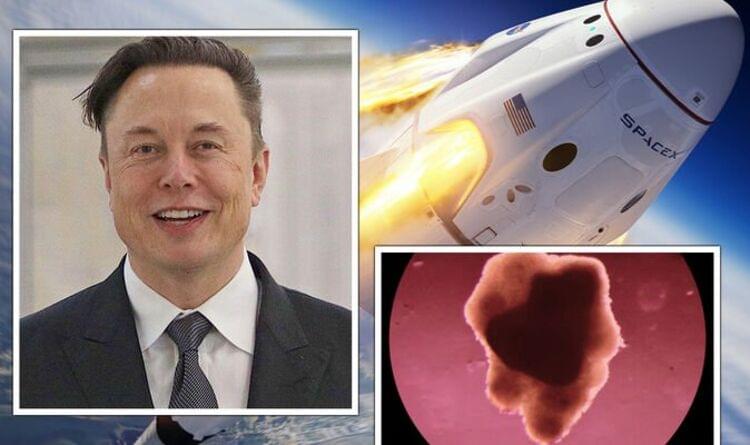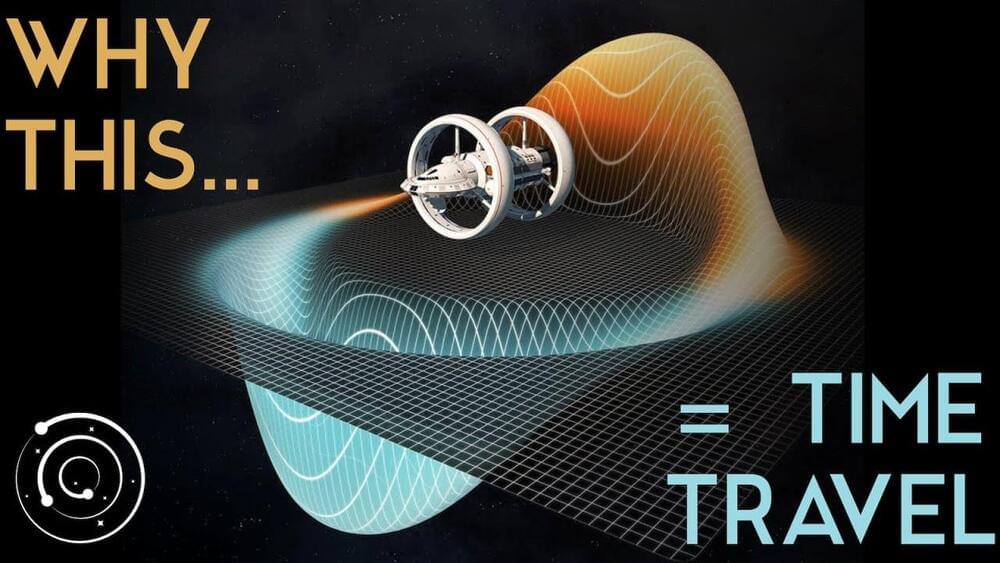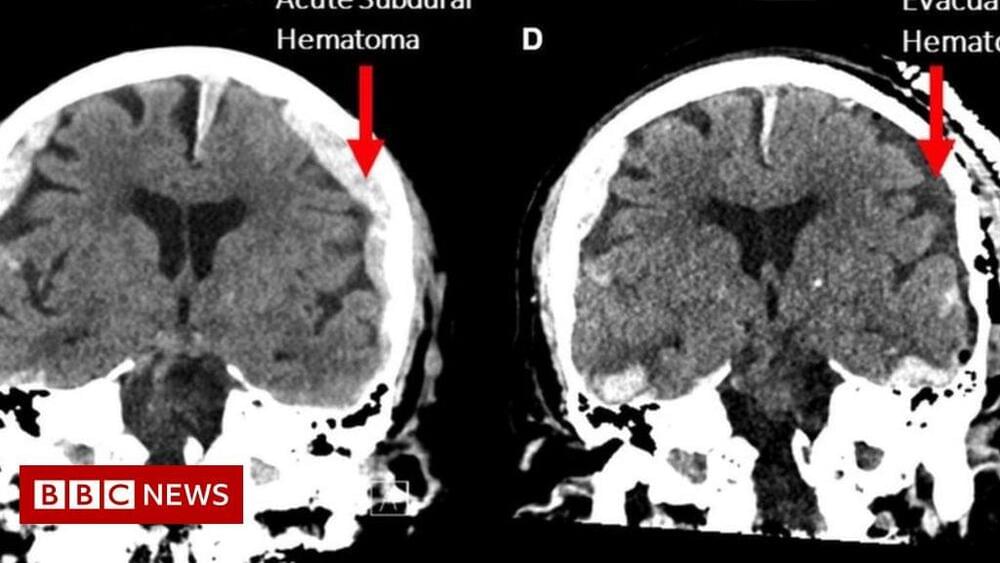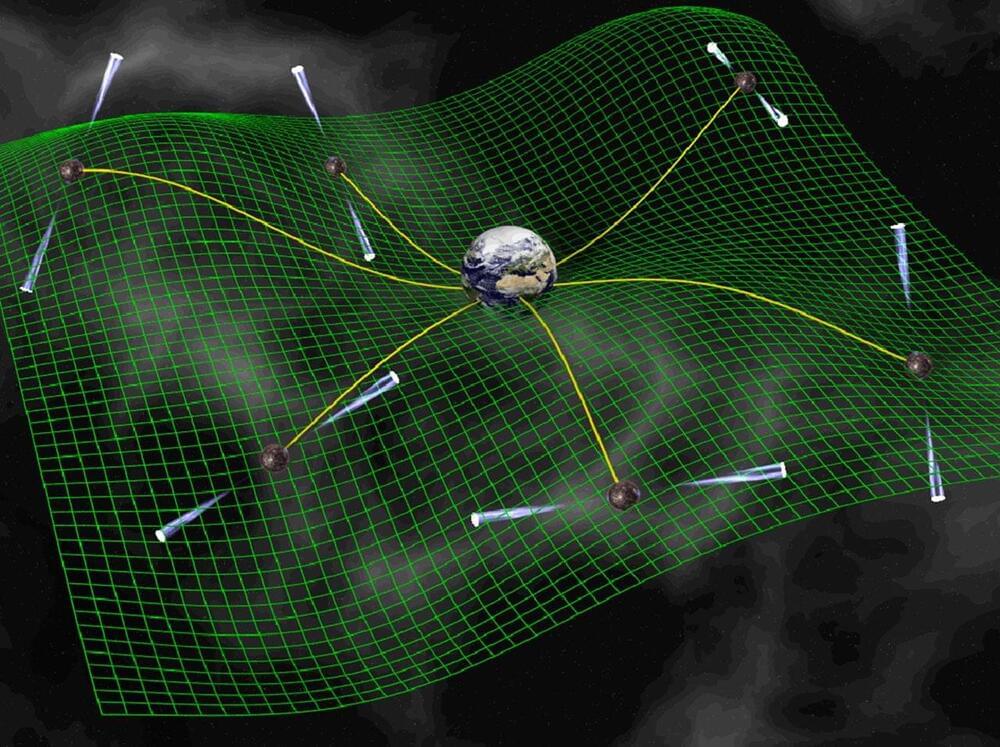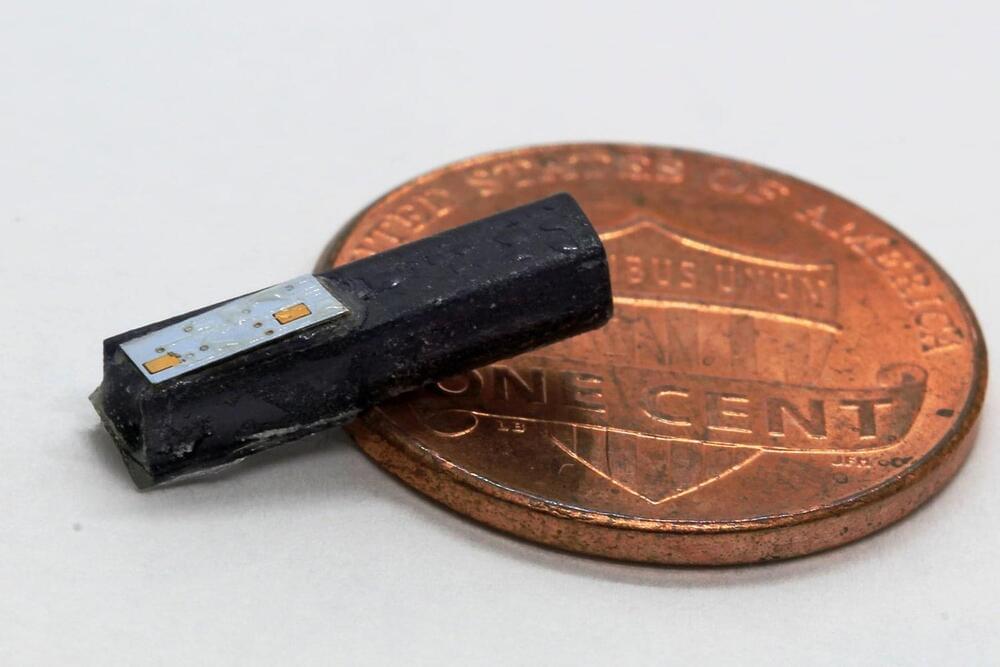Some diabetes therapies work by ramping up the body’s secretion of insulin to counteract high blood sugar levels. | Preserving insulin-producing pancreatic beta cells—rather than exhausting them—might be a better strategy in the treatment of diabetes. Following that thinking, scientists at the Karolinska Institute found a cancer drug by Seagen holds promise for the metabolic disease.
AN EXPERIMENT that could pave the way for the growth of artificial steaks in space to feed future astronauts is to launch next week on the first mission to carry an all-private crew up to the International Space Station (ISS).
From Toilet to Tap
Posted in futurism
Reverse osmosis waste system circa 2019.
Facility uses sophisticated technology to transform wastewater into clean water.
►Is faster-than-light (FTL) travel possible? In most discussions of this, we get hung up on the physics of particular ideas, such as wormholes or warp drives. But today, we take a more zoomed out approach that addresses all FTL propulsion — as well as FTL messaging. Because it turns out that they all allow for time travel. Join us today as we explore why this is so and the profound consequences that ensue. Special thanks to Prof Matt.
Written & presented by Prof David Kipping. Special thanks to Prof Matt Buckley for fact checking and his great blog article that inspired this video (http://www.physicsmatt.com/blog/2016/8/25/why-ftl-implies-time-travel)
→ Support our research program: https://www.coolworldslab.com/support.
→ Get Stash here! https://teespring.com/stores/cool-worlds-store.
THANK-YOU to our supporters D. Smith, M. Sloan, C. Bottaccini, D. Daughaday, A. Jones, S. Brownlee, N. Kildal, Z. Star, E. West, T. Zajonc, C. Wolfred, L. Skov, G. Benson, A. De Vaal, M. Elliott, B. Daniluk, M. Forbes, S. Vystoropskyi, S. Lee, Z. Danielson, C. Fitzgerald, C. Souter, M. Gillette, T. Jeffcoat, H. Jensen, J. Rockett, N. Fredrickson, D. Holland, E. Hanway, D. Murphree, S. Hannum, T. Donkin, K. Myers, A. Schoen, K. Dabrowski, J. Black, R. Ramezankhani, J. Armstrong, K. Weber, S. Marks, L. Robinson, F. Van Exter, S. Roulier, B. Smith, P. Masterson, R. Sievers, G. Canterbury, J. Kill, J. Cassese, J. Kruger, S. Way, P. Finch, S. Applegate, L. Watson, T. Wheeler, E. Zahnle, N. Gebben, J. Bergman, E. Dessoi, J. Alexander, C. Macdonald, M. Hedlund, P. Kaup, C. Hays, S. Krasner, W. Evans, J. Curtin, J. Sturm, RAND Corp, T. Kordell, T. Ljungberg & M. Janke.
::References::
► Alcubierre, M., 1994, “The warp drive: hyper-fast travel within general relativity”, Classical and Quantum Gravity, 11 L73: https://arxiv.org/abs/gr-qc/0009013
► Pfenning, M. & Ford, L., 1997, “The unphysical nature of Warp Drive”, Classical and Quantum Gravity, 14, 1743: https://arxiv.org/abs/gr-qc/9702026
► Finazzi, S., Liberati, S., Barceló, C., 2009, “Semiclassical instability of dynamical warp drives”, Physical Review D., 79, 124017: https://arxiv.org/abs/0904.0141
► McMonigal, B., Lewis, G., O’Byrne, P., 2012, “Alcubierre warp drive: On the matter of matter”, Physical Review D., 85, 064024: https://arxiv.org/abs/1202.5708
► Everett, A., 1996, “Warp drive and causality”, Physical Review D, 53, 7365: https://journals.aps.org/prd/abstract/10.1103/PhysRevD.53.
::Music::
Scientists who “accidentally” made the first ever recording of a dying brain saw startling results.
Scientists — who “accidentally” made the first ever recording of a dying brain — saw startling results.
Stephen Taylor, assistant professor of physics and astronomy and former astronomer at NASA’s Jet Propulsion Laboratory (JPL), said, “Using the pulsars we observe across the Milky Way galaxy, we are trying to be like a spider sitting in stillness in the middle of her web. How well we understand the solar system barycenter is critical as we attempt to sense even the smallest tingle to the web. The solar system barycenter, its center of gravity, is the location where the masses of all planets, moons, and asteroids balance out.”
So, where is the center of the solar system?
It is not in the center of the Sun as many might assume, instead it is closer to the surface of the star. This is due to Jupiter’s mass and our imperfect knowledge of its orbit.
A 55-year-old man who lost half of his external ear in a work accident in a carpentry shop that couldn’t be reattached nevertheless has a new ear lobe instead.
Plastic surgeons at Jerusalem’s Shaare Zedek Medical Center (SZMC) used advanced technology and artificial cartilage to sculpt a new earlobe and implant it on the side of the accident victim’s head.
The patient was rushed to SZMC’s emergency department after a wooden surface fell on him and caused the loss of the upp… See more.
“At first, I didn’t feel the lack of an ear,” said the patient, an Arab who works in the Jerusalem area.
Back in 1,859, long before the internet, a massive geoelectrical storm knocked out the telegraph systems in the world. Reports were given of telegraph operators being shocked, the paper catching fire, and the equipment being operated without the batteries being connected. This was caused by the massive surge of electrical power caused by the storm. These storms occur when a bubble of superheated gas from the sun hits the earth. These storms cause massive damage to our solar system. This occurrence causes a massive surge in electrical activity and damage. Scientists studying these events have concluded that they occur every 500 years. The event in 1,859, known as the Carrington Event, was the most recent. This could mean that in the year 2,359, another storm would wipe out the entire internet.
The Carrington Event was the largest recorded geoelectrical storm, but it wasn’t the first to happen. An even bigger storm happened in our solar system in A.D. 774, based on readings taken from ice core samples in the Antarctic. The solar flare that was launched from the sun during this event in the Antarctic caused the fastest and biggest rise in carbon-14. Carbon-14 is an isotope of Carbon, which is created from the sun and contains highly radioactive material. Though the Carrington Event was measured via observatories at the time, scientists were able to read the rings in the ice taken from the Antarctic event, which is now known as the Miyake event. Based on those readings, the Miyake event was even greater than the Carrington event. The readings of the ice showed a 14% increase in carbon-14. The Carrington event only saw an increase of less than 1% in carbon-14 readings.
Scientists have a rating system that measures the level of geoelectrical storms based on a scale of 1 to 5. The geoelectrical storms are then given a designation of G1 to G5 based on their intensity. The Carrington event was rated a G5. That would have meant the Miyake event was even more catastrophic in our solar system. A storm that was three times smaller than the Carrington event occurred in 1989. This event took place in Quebec, Canada, and caused the full collapse of the Hydro-Quebec electrical grid. The geoelectrical storm was so powerful that it also caused damage to a circuit breaker in New Jersey. This resulted in the grid’s circuit breakers going off, which caused five million people being without power for nine hours. Should an electrical storm like this occur in currently, the damage would be immeasurable.
Artificial gravity remains the stuff of science fiction. But dealing with no gravity causes significant problems in many astronauts, ranging from bone deterioration to loss of sight. An alternative method that might eliminate some of these problems is “simulated gravity,” which uses a spinning structure to create centrifugal force that would have the same effect on the body as gravity would. Whether or not this would solve the problems caused by lack of gravity remains to be seen. Still, NASA seems keen on the idea – to the tune of a $600,000 NASA Institute for Advanced Concepts (NIAC) Phase II grant to a team from Carnegie Mellon University (CMU) and the University of Washington (UW) who is looking to develop a structure that can simulate full Earth gravity and be launched in a single rocket.
The project in question is “Kilometer-Scale Space Structure from a Single Launch,” which was initially admitted to the NIAC program last year. Over the past year, they successfully completed a Phase I project where they “analyze[d] a mission concept analogous to the Lunar Gateway” that could deploy into a kilometer-long structure. Having met NASA’s expectations as part of that program, the team, headed by professor Zac Manchester of CMU and Jeffery Lipton of UW, were recently accepted as 2022 NIAC fellows.
𝐏𝐚𝐢𝐧 𝐍𝐞𝐰𝐬 𝐍𝐞𝐭𝐰𝐨𝐫𝐤:
The Neuro-Network.
𝐓𝐢𝐧𝐲 𝐄𝐱𝐩𝐞𝐫𝐢𝐦𝐞𝐧𝐭𝐚𝐥 𝐈𝐦𝐩𝐥𝐚𝐧𝐭 𝐂𝐨𝐮𝐥𝐝 𝐓𝐫𝐞𝐚𝐭 𝐍𝐞𝐮𝐫𝐨𝐩𝐚𝐭𝐡𝐢𝐜 𝐏𝐚𝐢𝐧
𝘼 𝙩𝙞𝙣𝙮 𝙬𝙞𝙧𝙚𝙡𝙚𝙨𝙨 𝙞𝙢𝙥𝙡𝙖𝙣𝙩 𝙩𝙝𝙖𝙩 𝙨𝙩𝙞𝙢𝙪𝙡𝙖𝙩𝙚𝙨 𝙥𝙚𝙧𝙞𝙥𝙝𝙚𝙧𝙖𝙡 𝙣𝙚𝙧𝙫𝙚𝙨 𝙛𝙧𝙤𝙢 𝙬𝙞𝙩𝙝𝙞𝙣 𝙗𝙡𝙤𝙤𝙙 𝙫𝙚𝙨𝙨𝙚𝙡𝙨 𝙨𝙝𝙤𝙬𝙨 𝙥𝙤𝙩𝙚𝙣𝙩𝙞𝙖𝙡 𝙖𝙨 𝙖 … See more.
By Pat Anson, PNN Editor.
A tiny wireless implant that stimulates peripheral nerves from within blood vessels shows potential as a treatment for neuropathic pain, according to a proof-of-concept study by a team of Texas researchers published in the journal Nature Biomedical Engineering.

